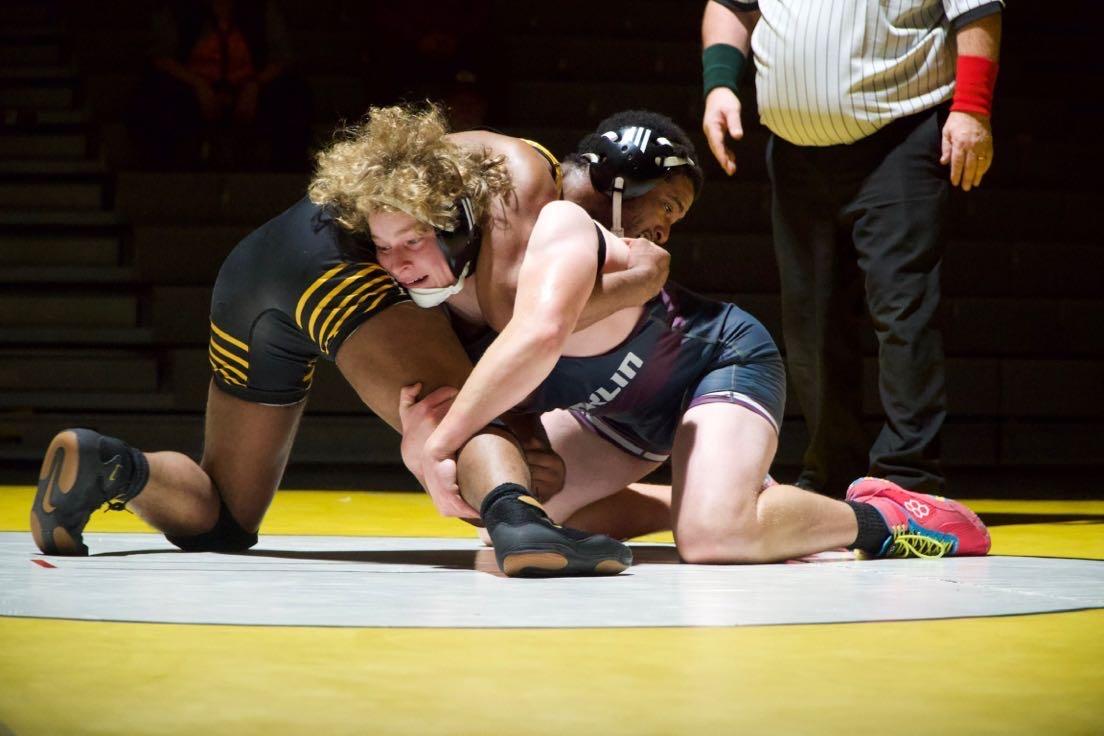Wrestling is a sport like no other. In high school, very few sports can compare to wrestling because, as Ian Healy, a junior and third-year wrestler at Franklin High School, says, “…you’re battling another person.”
The main goal of wrestling is to pin the other opponent by getting both of their shoulder blades flat to the mat; this may seem easy to non-wrestlers, but it’s not all about strength, as skill plays a much larger role than some may think. Wrestling’s considered a combat sport, which is a contact sport that involves one-on-one combat, much like jiu jitsu and other martial arts.
Similar techniques are used in these sports including grappling. Grappling is the action of fighting for control over the other person, allowing a competitor to have a greater chance of getting their opponent on the mat. A jiu jitsu or submission grappling match ends with a tap out.
A few basic rules of wrestling are the following: start the match three feet and three inches away from each other, when the whistle blows the match starts and the competitors can make their moves; you may not leave the mat without the referee’s permission. There are three rounds total, each two minutes long. The wrestler with the most points once the timer runs out wins the match, unless someone sets a pin. Setting a pin means a wrestler has successfully held their opponent’s shoulder blades flat on the mat for at least three seconds or once called by the referee.
Illegal holds such as locking hands around an opponent’s head without an arm or leg included or while they are on the ground will result in a penalty. Technical violation and unsportsmanlike conduct can also be called as a penalty and will result in one to two points being deducted from the wrestler. A wrestler can get disqualified from the match if they receive five penalties or injure their opponent with an illegal move, according to flowrestling.org.
Although wrestling is a physical sport, and you’re trying to pin your opponent on the floor, the moves you use aren’t meant to hurt competitors. Injuries in the sport often occur by mistake in the heat of the match. “When I used to wrestle at Benson during my freshman year, I knew a kid on my team who tore his ACL,” Healy says, when asked about the worst wrestling injury he’d seen.
A huge part of wrestling is also weight class; your weight will determine who you wrestle against. There can only be one varsity person for each weight class, so if too many quality wrestlers are on a team in the same weight class, athletes must choose between being on JV or trying to lose or gain weight to compete in a specific weight class each meet. Habetz states that “at the beginning of the season they weigh you to see what [weight class] you’re eligible for, so let’s say you’re at 150, you could probably cut 15 to get to 135ish because they do not want you to starve yourself, or develop an eating disorder, so they won’t make you cut too much.”
Although the sport has faced criticism for its encouragement of changing weight for performance, many athletes have found it to be an inclusive and inviting space. In Healy’s experience: “Wrestling is a sport for everyone.” Anyone can participate and at Franklin there are no cuts from the team; it’s for fun! “Since I started wrestling it really built up my confidence, knowing [I am] capable and have the skills of defending [myself],” says Healy.
Although wrestling’s main goal is to get the other opponent pinned to the floor, wrestling is a lot more than that. It’s about accuracy and dedication, pushing your body and mind and ultimately, developing resilience. To learn more about the team at Franklin, you can follow their Instagram account @fhs.lightning.wrestling.


































